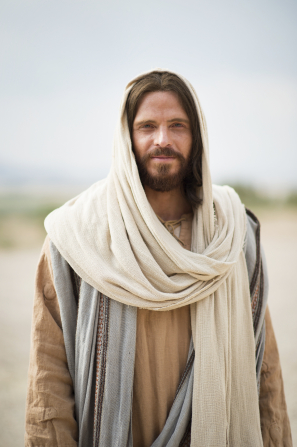Jesus Christ, the Son of God
Perhaps the most important truth we can learn in this life
is that Jesus Christ is the Son of God and the Savior of the world. Nothing
else in life really, ultimately, matters if we don’t have a testimony of this
one truth.
Since that is true, it would seem reasonable that one of the
paramount things Jesus would do during His mortal ministry would be to testify
and show, in every possible way, that He was the divine Son of God, the
promised Messiah who would save the world from sin and spiritual captivity.
When I read the New Testament with this one idea in mind
many, if not all, of the stories in the four gospels make more sense. This is a
perspective, or a skill if you will, I have used as I study the stories
recorded in the New Testament. I read the stories and ask myself: How do the
events and words in this story testify to me of the divinity of Jesus Christ as
the Son of God and the Savior of the world? What do I learn about Him and His
divine nature?
New Testament Examples
In Matthew 1:1–16 a lineage is provided. Then in verse 17,
Matthew talks about their being 14 generations from Abraham to David, from
David until the carrying away into Babylon, and from Babylon to Christ. I think
it is significant to note that there are only 13 generations listed from
Babylon to Christ. So why did Matthew include the genealogy and then conclude
it with a miscalculated summary?
Immediately following his declaration of three sets of 14
generations, Matthew told of the birth of Christ. It was as though he was
trying to tell them something about this special baby. Indeed, he was trying to
help the Jews connect their ritualistic sacrifices with the birth of the Son of
God.
The number 14 had tremendous spiritual significance to the
Jews. At a certain time of the year during their annual celebration, the
children of Israel spent eight days making sacrifices (Numbers 29:12–34). On
each day, the number of sacrifices would change, except the sacrifice of 14
lambs. And those lambs were to be the firstborn and without blemish, as deliberate
foreshadowing of the promised Messiah, the Only Begotten Son of God in the
flesh.
Matthew was, in essence, saying to the Jews of his day, “You
sacrifice 14 lambs each day once a year at a holy meeting each year to remind
you of the coming of Jesus Christ. This baby who is born of Mary is the
fulfillment of those prefiguring sacrifices.”
Once I saw this insight, that seemingly out of place genealogy
made more sense and became more than a list of generations from Abraham to the
birth of Christ. It became a testimony of the divine Son of God condescending
to take upon Himself flesh and blood.
As another example, in Mark 11:12–14 and 19–26, we read the
story of Jesus cursing a fig tree. This seems so contrary to His divine nature.
After all, this was one of His creations. It seems so wasteful, especially in
light of the fact that it wasn’t even time for the fig tree to bear figs (Mark
11:13). So, why did the Lord do this?
The next morning, the disciples were captivated by the
swiftly-withered tree. It was certainly a great way to get their attention.
They were ready to listen to whatever the Lord had to say and he did teach them
of doubt and belief and of prayer and forgiveness. But it seems less than
satisfying that the Lord would go to such great lengths only to provide an enchanting
object lesson.
In reality, this was one of many, many ways the Lord tried
to teach about who He was. He was telling them, and showing them, that He was
the Son of God, who had power over all things, including to save them.

No comments:
Post a Comment
Note: Only a member of this blog may post a comment.